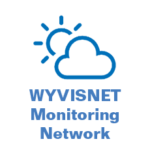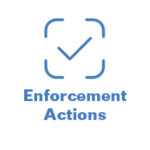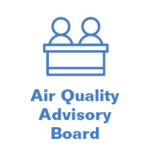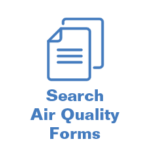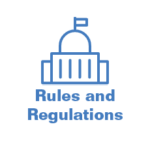- Home
- Public
- Resources
- Advanced Search
- Advisory Boards
- Careers
- District Offices
- e-Payment
- Enforcement Actions
- Meet the Director
- Mission Statement and Values
- Nondiscrimination Policy
- Outreach and Public Information
- Public Comments Online Portal
- Public Notices
- Records Requests
- Spill and Complaints
- State of the Environment
- Topics
- Divisions
- News
- Calendar
Winter Ozone
- Home
- Air Quality
- Ozone
- Winter Ozone
If the download box is not working below, please click here.
Did you know that Ownership Change Forms should be filled out when facility acquisitions occur and/or company name changes take place? The Air Quality Division has attached the Change of Ownership Forms for Minor Sources and Title V Facilities below for your convenience. These forms need to be completed and mailed to the following address:
ATTN: Planning Section
Wyoming DEQ - Air Quality Division
200 W 17th St, Ste 300
Third Floor
Cheyenne, WY 82002
It is important to submit completed ownership changes in a timely manner as IMPACT portal users will not have access to newly-acquired facilities until the completed forms are received and processed.
If you have any questions about ownership changes, please feel free to email deq-air-impact@wyo.gov or contact a staff member by phone at 307-777-7391.
Below are forms associated with ownership change.
If the download box is not working below, please click here.
Search all Air Quality webpage forms and documents below.
If the download box is not working below, please click here.
All official Wyoming State Rules and Regulations are kept at the Wyoming Secretary of State’s Office. Click here to view all current Rules and Regulations.
Winter Ozone
In 2005, the Air Quality Division recorded elevated ozone levels in the Upper Green River Basin. We know that the ozone exceedances are related to at least four factors: adequate amounts of precursor chemicals, snow cover, temperature inversions and low winds, and sunlight.
In the time since then, DEQ has been working to lower the ozone levels, conducting a series of studies on the area. You can learn more about ozone efforts from 2005-2017 in the Upper Green River Basin, in our report the UGRB Power of Partnerships.
This page is intended to provide the public and industry with information about past and current work, background information related to the ozone issue, current ozone data, and technical documents and forms.
Primary Point of Contact to Improve Communication
In response to input received from the public, the DEQ is revising the plan to improve communication relating to ozone and the Upper Green River Basin. The AQD Ozone Team will be the primary point of contact and can be reached at ozone@wyo.gov or 307-777-7045. The AQD Ozone Team comprises interagency staff who provide ongoing oversight of ozone related work Statewide, including the Upper Green River Basin.
Public Record Requests
The WDEQ web portal will help you communicate with DEQ about what documents you need. Please click here to file your records request.
Winter Ozone Season Communication
During the Winter Ozone Season (January – March), the DEQ will be communicating on topics relating to ozone and the Upper Green River Basin.
The AQD will issue an Ozone Outlook notice for the Upper Green River Basin when weather conditions are forecasted to persist for multiple days that may be conducive for ozone formation. AQD will issue an Ozone Outlook notice 48 hours in advance of the first day of the Ozone Outlook. When an Ozone Outlook is issued, it is intended to assist the community to prepare accordingly (e.g., postpone non-essential activities until after or complete essential activities prior) for the days included in the Ozone Outlook to voluntarily reduce emissions. Please remember that current information on ozone levels at the AQD’s monitoring stations can be found at www.wyvisnet.com.
AQD will provide the community with Ozone Action Day notifications when they are issued. AQD will issue an Ozone Action Day one day in advance when forecast weather conditions appear favorable for the formation of elevated ozone the following day. Ozone Contingency Plans should be implemented upon one-day notice and everyone is encouraged to voluntarily reduce emissions.
Everyone is encouraged to implement contingency plans and continue to reduce emissions on the day after an Ozone Action Day. A public-oriented Ozone Contingency Plan Form.docx is available for residents and small businesses in the UGRB.
Please remember that current information on ozone levels at the AQD’s monitoring stations can be found at www.wyvisnet.com.
Note: AQD winter ozone forecasting takes place only from January through March of each calendar year.
For more information about Winter Ozone Updates, please call 1-888-WYO-WDEQ.
Since the winter of 2009, the AQD has asked that oil and gas operators develop short-term emission reduction plans that can be implemented with one-day notice from an impending elevated ozone forecast. Starting with the winter of 2013, the AQD promoted the expansion of short-term emission reduction measures on ozone action days by all stakeholders, including governmental agencies/entities and the public.
Ozone Contingency Plans
Ozone Contingency Plans (OCPs) identify activities that can reduce emissions and can be implemented upon one-day notice from the AQD of an impending Ozone Action Day (OAD). Examples of ways to reduce emissions on OADs include:
- Deferring non-essential construction and maintenance activities
- Delaying the refueling of trucks and equipment
- Eliminating truck idling when possible
This page provides ozone contingency plan participants with information and forms to implement these contingency plans.
If the download box is not working below, please click here.
The AQD Monitoring Section helps ensure the ambient air quality in the State of Wyoming is maintained in accordance with the National Ambient Air Quality Standards (NAAQS). To carry out this goal, AQD operates and maintains a network of ambient air quality monitors to determine compliance with the NAAQS.
When areas, like the Upper Green River Basin, are not meeting the NAAQS, AQD also performs special monitoring studies such as the Upper Green Winter Ozone Study (UGWOS) to better understand ozone formation.
AQD also participates in EPA's national program to inform the public of the current air quality index called AirNow.
Current gaseous pollutant and visibility monitoring data can be viewed on www.wyvisnet.com.
Currently, for the 2015 Ozone National Ambient Air Quality Standards (NAAQS) – the most stringent ozone standard – all of Wyoming’s counties are meeting the standard and are in the process to be designated as attainment/unclassifiable by the U.S. Environmental Protection Agency (EPA).
What is a Ozone Nonattainment Area?
A ozone nonattainment area is one in which air quality does not meet the ozone standards set forth by the Federal government. On October 1, 2015, EPA revised the 8-hour primary and secondary National Ambient Air Quality Standards for ozone by lowering the level from 75 parts per billion (ppb) to 70 ppb.
If the download box is not working below, please click here.
The purpose of the former Upper Green River Basin Air Quality Citizens Advisory Task Force was to consider and advise on potential solutions to reduce ozone. It accomplished this through mutual education; increasing transparency in process; fostering communication among citizens, the WDEQ, other governmental agencies and other stakeholders; and coordinating information between governmental agencies.
- UGRB Ozone Taskforce Participants
- UGRB Task Force Situation Assessment & Process Recommendations
- UGRB Ozone Task Force Final Recommendations
For more information, please visit the Ruckelshaus Institute Task Force Website
The page provides all final reports and technical documents collected from the Air Quality Division pertinent to the Nonattainment Winter Ozone area.
If the download box is not working below, please click here.
In the winters of 2005 and 2006, primarily in the month of February, the Wyoming Department of Environmental Quality - Air Quality Division (AQD) measured 8-hour ozone concentrations greater than 80 ppb at monitoring stations in the Upper Green River Basin. In 2007, the AQD instituted the Upper Green Winter Ozone Study (UGWOS) program. Through several years of targeted monitoring studies, the AQD has continued to provide monitoring data to assist the AQD and other scientists in understanding the winter ozone phenomenon. For each year the study has been conducted, the Quality Assurance Project Plan (QAPP), monitoring database, and the final report can be found below.
Please note that, although these data have been fully quality assured, there can be issues when translating these data into an MSAccess database; therefore, the database has been versioned in the event that translation errors are found. For more information, please contact Ca
If the download box is not working below, please click here.



